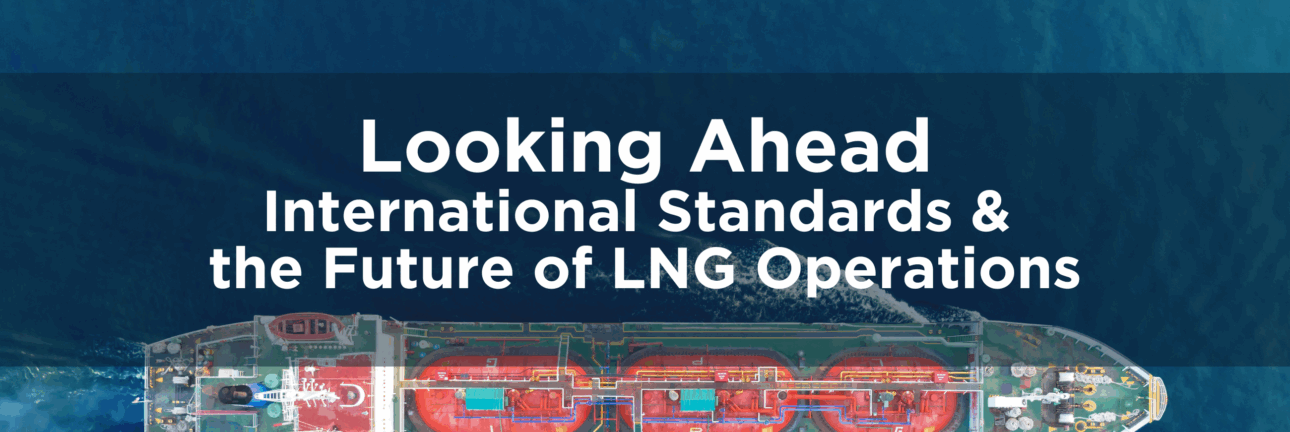Looking Ahead – International Standards and the Future of LNG Operations

Liquified natural gas (LNG) is not only shaped by U.S. regulations but also by shifting international standards and best practices. As markets globalize, operators must stay ahead of evolving expectations to remain competitive and compliant.
In this conclusion to our series on maritime and LNG safety, Steve Calabrese closes the interview. He offers a look at what’s on the horizon.
Shifts in International Standards: What’s Next for U.S. LNG?
Q: Are you seeing shifts in international standards that could impact U.S. LNG operations in the next few years?
A: Yes, there are several important shifts in international standards that are already shaping LNG operations in the United States. These shifts will continue to influence operations in the future. One of the most significant areas is the continued evolution of LNG bunkering standards. While U.S. regulations are grounded in 33 CFR Part 127, National Fire Protection Association (NFPA) 59A, and Pipeline and Hazardous Materials Safety Administration (PHMSA) requirements, the Coast Guard frequently aligns its expectations with international best practices.
For example, the ISO 20519:2021 standard updated specifications for LNG bunkering systems, personnel training, and bunker delivery documentation. International Organization for Standardization Technical Specification (ISO/TS) 18683:2021 provides detailed safety and risk assessment guidance across ship-to-ship, shore-to-ship, and truck-to-ship bunkering scenarios. Complementing this, the Society for Gas as a Marine Fuel’s (SGMF) 2022 update to its Safety and Operational Guidelines for LNG Bunkering has become one of the most comprehensive references available. It expands coverage on vessel design, bunkering execution, and simultaneous operations.
The U.S. Coast Guard has reinforced this alignment with its own recent policy updates. CG-OES Policy Letter 01-25, issued in 2025, provides updated guidance for LNG and other alternative marine fuel bunkering operations. It emphasizes the use of structured operational risk assessments, stakeholder engagement through Harbor Safety Committees, and harmonization with ISO and SGMF guidelines. This shows a clear regulatory trajectory: while 33 CFR Part 127 remains the foundation, Coast Guard expectations increasingly reflect evolving global practices.
Looking forward, the development of standards for emerging fuels like ammonia and hydrogen is also gaining momentum. SGMF has already issued early bunkering guidelines for methanol and ammonia. Classification societies are advancing hydrogen-specific design and safety criteria. For U.S. operators, this means future projects may need to demonstrate compatibility not just with LNG, but with a wider portfolio of low-carbon fuels.
Finally, the integration of cybersecurity and Environmental, Social, and Governance (ESG) considerations into international frameworks will likely influence U.S. LNG operations. The International Maritime Organization’s (IMO) has already mandated cyber risk management under the International Safety Management Code (ISM) Code, and the Coast Guard’s new cybersecurity rule aligns with this direction. Similarly, international financing and regulatory pressure around lifecycle emissions and environmental justice are beginning to affect LNG project development in the U.S.
Taken together, these shifts show that U.S. operators cannot focus solely on domestic regulatory compliance. International standards—particularly from ISO, SGMF, and the IMO—are increasingly setting the benchmarks that shape U.S. LNG project expectations, and staying ahead of these developments is critical to maintaining both compliance and competitiveness.
Closing Thoughts
From emerging fuels to shifting standards, the LNG sector is entering a period of rapid change. At AcuTech, our role is to help clients anticipate these shifts and adapt with confidence. The future of LNG safety and security will belong to those who combine expertise with foresight.
If you’ll be at the 21st Americas LNG Summit & Exhibition in Lake Charles, don’t miss the chance to meet Steve. You can discuss the future of LNG operations with him.
